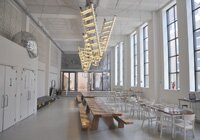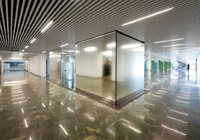Award schedule
18 February, 2013: Shortlist announced
10 April, 2013, 21:00 - 23:00: Award ceremony at Area 56, Via Savona 56, Milan
(by invitation only)
11 April, 2013, 13:00 - 14:00: Panel discussion at Area 56, Via Savona 56, Milan
(admission free)
The award
Background
The Frame Moooi Award was launched in 2011 with the goal of uniting innovative interiors with equally as inspiring furniture and lighting.
Frame and Moooi are both leaders in the design industry; glossy pages of Frame magazine focus on cutting-edge interiors, while Moooi strives to create spectacular furnishings and lighting. Combining the interests of both organizations, the Frame Moooi Award was launched to target interior designers and architects who custom created a lamp or furnishing for a specific interior. There’s just one condition: these must be products that can lead a life outside the interior for which they were designed.
2012 Award
The inaugural award was officially launched on 1 September, 2011, with the opening of the online application system at framemoooi.com. Within the following three months, a total of 890 entries from 79 countries were submitted.
It seemed fitting that an award of this calibre needed an equally as dazzling judge – Philippe Starck was up for the task. The internationally-celebrated designer reviewed the submissions and selected 10 finalists anonymously (amongst them the grand prize winner).
The Ceremony
The inaugural award culminated in Milan at the Salone del Mobile in April, 2012, where representatives of Frame and Moooi hosted a gala event on 18 April. Philippe Starck joined Marcel Wanders to reveal the inaugural winner.
The Prize
The winnner of the Frame Moooi Award claims a €25,000 prize; at the 2012 award, Dutch designer Bertjan Pot went home with the cash! The 10 finalists' projects and an in-depth report on the award were featured in Frame #86.
Why Product Design?
Product designers work on commission for manufacturers. Their aim is production – and reproduction. Architects and interior designers, on the other hand, make furniture and lamps that satisfy an architectural need, respond to a new function or address a specific problem. Many high-profile pieces of furniture or lighting objects have been designed for a specific context. Examples are the Barcelona Chair, designed by Mies van der Rohe for the 1929 International Exposition in Barcelona; the Egg Chair, which Arne Jacobsen developed in 1958 for the Radisson SAS Hotel in Copenhagen; and the Ear Chair, an object that Jurgen Bey conceived in 2003 as a mini meeting room for Dutch insurance company Interpolis. These and other iconic products went on to experience large-scale production and to appear in a wide range of interior projects. Many proved to be so innovative that they gathered a following, eventually inspiring other designers to come up with similar models. Contextual designs are clearly important for the development of furniture and lamps. They also strengthen the bond between (interior) architect and product designer.
Register / LoginThe application period is closed. |
|
Latest newsSign up to receive our newsletter. |
Sample work









 Home
Home